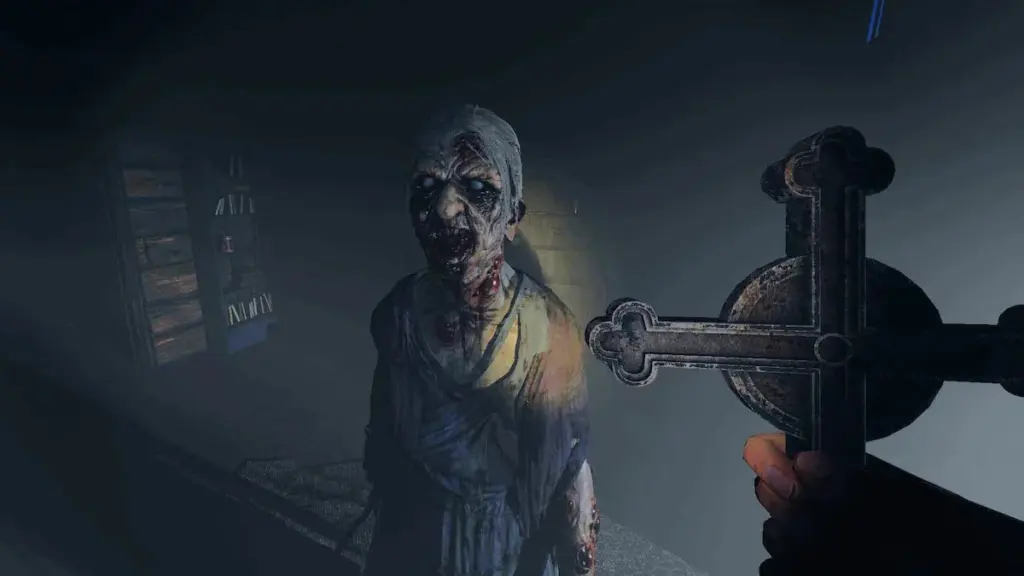In a world where belief has turned into obsession, Phasmophobia (2026) transforms the viral ghost-hunting phenomenon into a spine-chilling descent into the unknown. It’s not just about what you hear — it’s about what hears you.
When four seasoned investigators — led by Natalie Dormer, Wyatt Russell, and Rahul Kohli — enter the ruins of the abandoned Ridgeview Manor, their mission is simple: collect evidence, record contact, and walk away. But the moment they cross the threshold, their technology turns against them. Spirit boxes whisper names that were never spoken. EMF readers spike to impossible levels. And the cameras begin to capture things no human eye should ever see.

As the team ventures deeper into the house’s decaying halls, reality fractures. The walls pulse with unseen breath, the temperature drops to inhuman cold, and something ancient begins to communicate — not with words, but through imitation. Voices from loved ones. Footsteps that match their own. The hunters become the hunted as each night in the manor unravels sanity itself.
Director Leigh Whannell delivers his most immersive horror experience yet — a masterclass in psychological dread where the camera never blinks, and the audience feels like they’re part of the investigation. Every sound matters. Every shadow lies. The atmosphere thickens with tension until even silence becomes unbearable.
Natalie Dormer anchors the film as Dr. Elise Marks, a skeptic-turned-believer whose personal tragedy blurs the line between science and superstition. Wyatt Russell plays the team’s tech expert, whose bravado crumbles as his gadgets begin to act like living things. Rahul Kohli and Jessica Barden round out the crew — each carrying secrets that the house slowly exposes. Their chemistry fuels the emotional backbone of the story, making every scream hit harder.
![Phasmophobia' Comes to PlayStation 5, PS VR2 and Xbox Series on October 29 [Trailer] - Bloody Disgusting](https://bloody-disgusting.com/wp-content/uploads/2024/10/phasmophobia.jpg)
The film’s sound design — built around low-frequency rumbles, distorted whispers, and the rhythmic static of ghost-hunting gear — becomes its own character. The silence after a spirit box cuts out feels like a scream that’s been swallowed whole.
Shot in eerie, dimly lit realism, Phasmophobia’s cinematography channels found-footage authenticity while maintaining cinematic precision. Whannell uses long takes, mirror shots, and distorted reflections to build unease — until the audience begins questioning what’s real and what’s already possessed.
What separates Phasmophobia from typical haunted house horror is its psychological depth. The ghosts here are not random — they feed on guilt, grief, and obsession. The investigators’ fears manifest in physical form, forcing them to confront their own sins as much as the supernatural ones around them. The more they search for proof, the more they invite their own damnation.
By the final act, the haunting becomes cyclical — the team realizes the house is not haunted by ghosts… it’s haunted by them. Their presence has rewritten the story, trapping their images in an eternal loop of fear and regret. The last transmission from their camera is a whisper: “We found them.”
⭐ Rating: ★★★★★ (9.4/10) – “Relentlessly terrifying, brilliantly crafted, and emotionally devastating. A haunting so real, you’ll feel the cold on your skin.”
✨ Tagline: “Enter only if you dare — and pray they don’t follow you home.”





